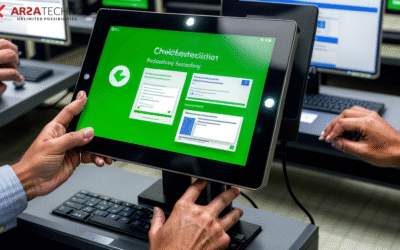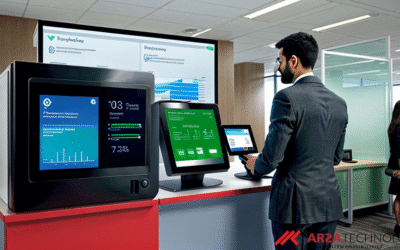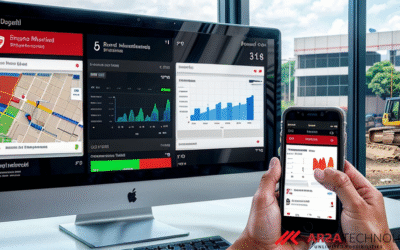Introduction: Overcoming Manual and Inefficient Workflows in the Healthcare Industry
In the fast-paced, high-stakes world of healthcare, efficiency is not just a business metric—it’s a critical component of patient care. Yet, clinicians and administrative staff are often bogged down by one of the most persistent bottlenecks: manual and inefficient workflows. From transcribing patient notes and filling out electronic health records (EHR) to controlling medical imaging software, the reliance on manual data entry is a significant drain on time, a source of professional burnout, and a risk for data inaccuracy. Every moment a doctor or nurse spends typing is a moment not spent with a patient.
This is where the strategic implementation of voice technology creates a paradigm shift. Voice-controlled application interfaces, powered by a robust Speech-to-Text API, offer a direct solution to this pervasive challenge. By enabling hands-free operation and seamless voice-to-data conversion, these systems empower healthcare professionals to work more naturally and efficiently. This article provides a comprehensive cost analysis of Speech-to-Text API pricing, guiding technology leaders from startups to large enterprises in understanding the true return on investment (ROI) when automating clinical and administrative tasks.
The Staggering Hidden Costs of Inefficient Healthcare Workflows
Before analyzing the price of a solution, it’s essential to understand the cost of the problem. The reliance on manual, keyboard-based interaction in healthcare carries substantial, often underestimated, expenses that go far beyond wasted payroll hours.
First, there is the direct cost of time. Studies have shown that physicians can spend hours each day on administrative tasks, with a significant portion dedicated to updating patient records. This administrative burden is a leading cause of burnout, a crisis that costs the healthcare system billions annually in turnover and reduced productivity.
Second is the cost of errors. Manual data entry is inherently prone to mistakes, from simple typos to the more dangerous misinterpretation of a clinician’s handwritten notes. In a healthcare context, these errors can have severe consequences for patient safety and lead to costly legal and compliance issues.
Finally, there is the opportunity cost. When highly skilled professionals like surgeons, radiologists, and specialists are encumbered by clunky interfaces, their focus is divided. A system that requires them to break sterility to type on a keyboard or divert their attention from a critical image to a mouse and keyboard is a system that introduces friction and inefficiency at the most critical moments. The cumulative effect is a slower, more frustrating process for providers and a diminished experience for patients.
Transforming Care Delivery with Voice-Controlled Interfaces
Imagine a surgeon in an operating room who can call up patient vitals or adjust medical equipment with a simple voice command, never breaking sterile protocol. Picture a primary care physician dictating patient notes directly into an EHR in real-time during a consultation, fostering a more natural and engaging patient interaction. This is the reality enabled by integrating a powerful voice to text API.
By converting spoken language into structured, usable data, a Speech-to-Text API serves as the engine for hands-free control and documentation. This technology allows developers to build applications where users can:
* Navigate Complex Software Hands-Free: Clinicians can search for patient records, navigate through medical images, and operate diagnostic tools using voice commands.
* Automate Clinical Documentation: Dictating notes, prescriptions, and reports directly into the system eliminates the time-consuming process of manual transcription.
* Improve Accessibility: Voice interfaces provide an essential tool for professionals with disabilities and create a more ergonomic work environment for everyone.
The core technology making this possible is our highly accurate transcription API, which is designed to understand context and specialized terminology, ensuring that commands and dictations are captured correctly the first time.
Deconstructing Speech-to-Text API Pricing: A Guide for Decision-Makers
When evaluating a transcription API, you’ll typically encounter a few common pricing structures. Choosing the right one depends on your organization’s scale, usage patterns, and growth trajectory.
- Pay-As-You-Go: This model charges based on the amount of audio processed, usually per minute or per second. It’s an excellent starting point for startups and development teams looking to prototype a solution or for applications with variable, unpredictable usage. It offers maximum flexibility with no upfront commitment.
- Tiered Subscriptions: For more predictable workloads, providers often offer monthly or annual subscription plans that include a set volume of transcription minutes at a discounted rate. These tiers are ideal for scaling applications, providing cost certainty as your user base grows.
- Enterprise and Custom Plans: Large-scale healthcare systems, medical device manufacturers, and established software vendors often require custom solutions. These plans typically involve volume discounts, dedicated support, enhanced security and compliance features (like HIPAA BAA), and options for on-premise deployment.
While the per-minute rate is an important factor, it’s only one piece of the puzzle. A truly effective cost analysis must look beyond the sticker price to the total value delivered.
Calculating the True ROI: Beyond Per-Minute Transcription Costs
The true value of a Speech-to-Text API in healthcare is measured in outcomes, not minutes of audio. A sophisticated ROI calculation must account for the “hidden” savings and value-adds that a high-quality API provides.
1. Time Savings and Productivity Gains: Calculate the average time your clinical staff spends on documentation and administrative tasks. A 20-30% reduction in this time per user, multiplied across your organization, quickly translates into thousands of reclaimed hours that can be redirected to patient care.
2. Reduction in Error-Related Costs: High-accuracy transcription minimizes data entry errors, reducing the risk of adverse events and associated compliance penalties. This risk mitigation has a tangible financial value.
3. Accelerated Development and Integration: Building a proprietary speech recognition engine is a multi-year, multi-million dollar endeavor requiring a specialized team. Leveraging a pre-built, enterprise-grade API dramatically reduces your time-to-market and total cost of ownership. To see how simple it is to integrate our solution, you can demo the Speech-to-Text API in an interactive environment.
4. Enhanced User Experience and Adoption: A seamless, responsive voice interface is a feature that users love. It drives higher adoption rates for your software and improves the job satisfaction of healthcare professionals. A complete voice interaction loop is also possible; after capturing a command, you can generate natural voice responses with our TTS API to provide confirmation and feedback.
When you factor in these elements, the API subscription becomes a high-leverage investment rather than a simple operational cost. The key is choosing a `multilingual STT API` that delivers the accuracy and reliability needed to unlock these benefits.
Conclusion: Your Next Step Towards a Solution
Choosing a Speech-to-Text API is a strategic decision that directly impacts clinical efficiency, data quality, and the overall cost of care delivery. By moving beyond a superficial comparison of per-minute pricing and conducting a thorough ROI analysis, technology leaders can clearly see the immense value of automating manual workflows. The right API partner provides more than just a utility; they provide a pathway to a more intelligent, responsive, and efficient healthcare ecosystem. By empowering clinicians with the tools to work at the speed of thought, you are not just optimizing a workflow—you are elevating the standard of care.
Ready to Solve Your Challenges with AI?
Discover how ARSA Technology can help you overcome your toughest business challenges. Get in touch with our team for a personalized demo and a free API trial.







